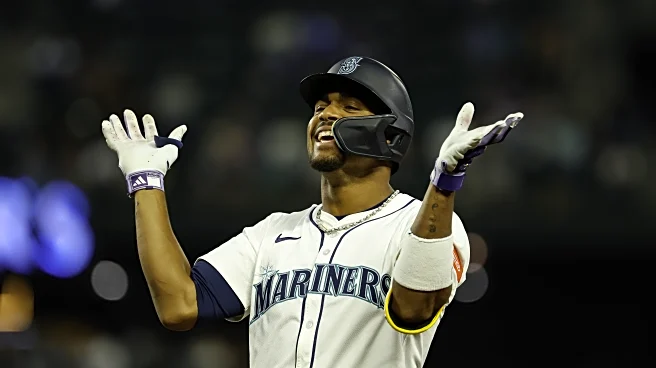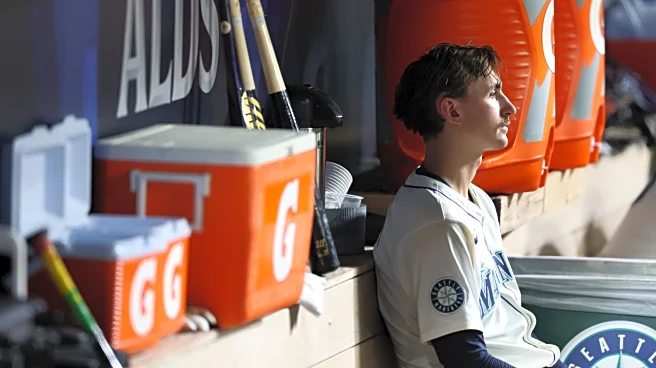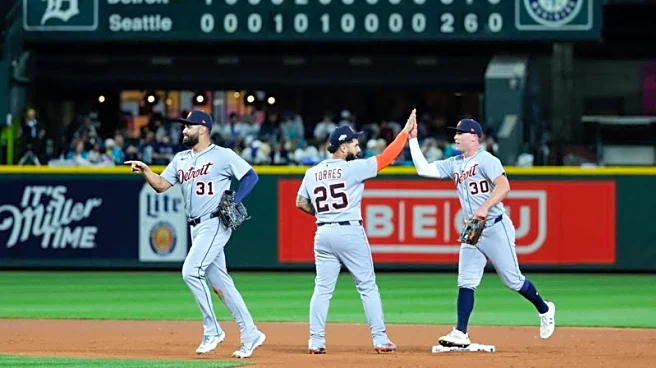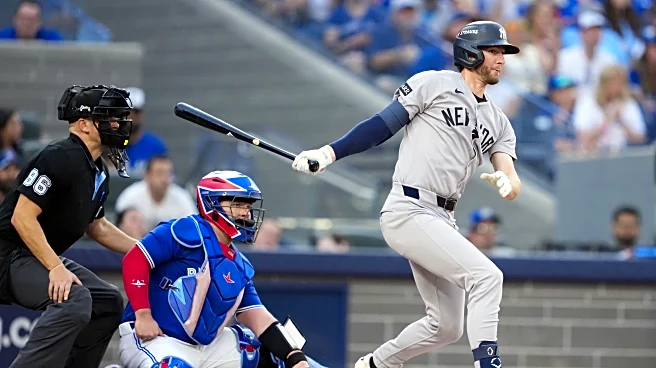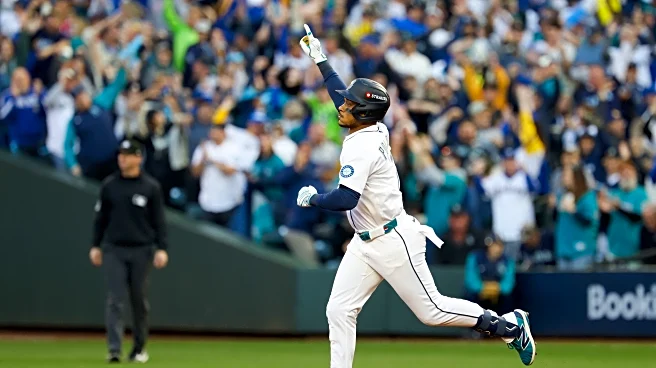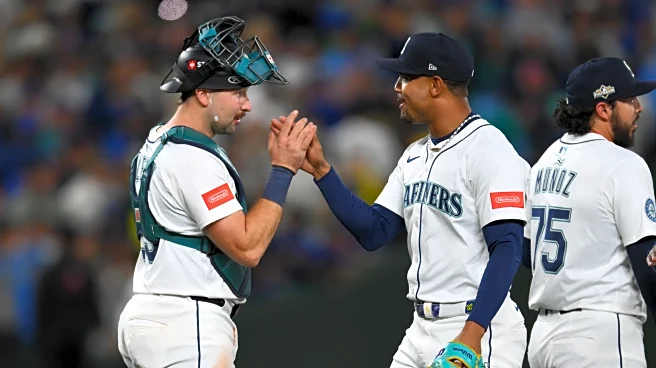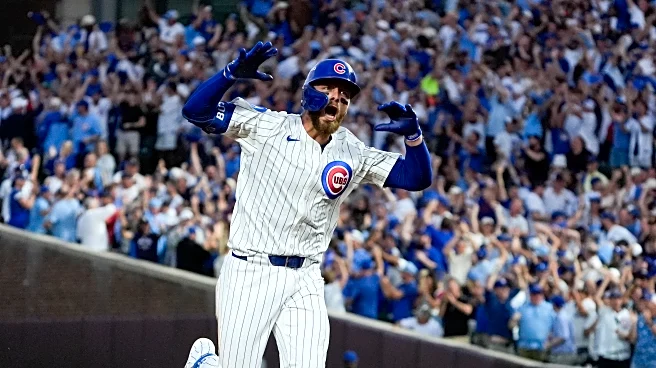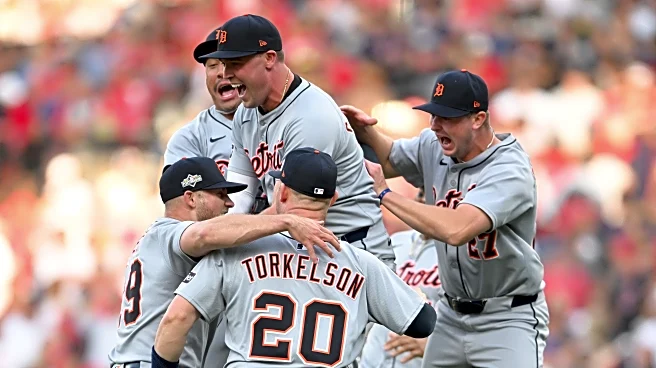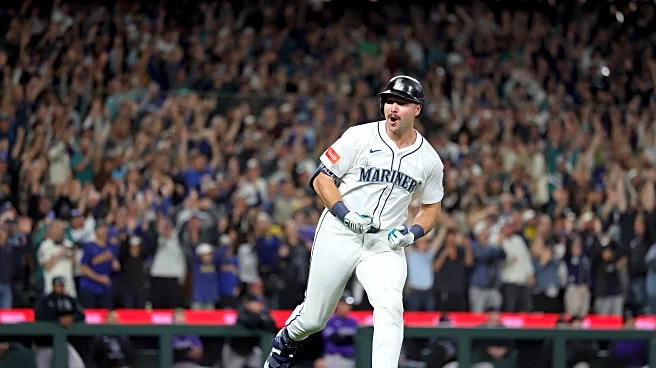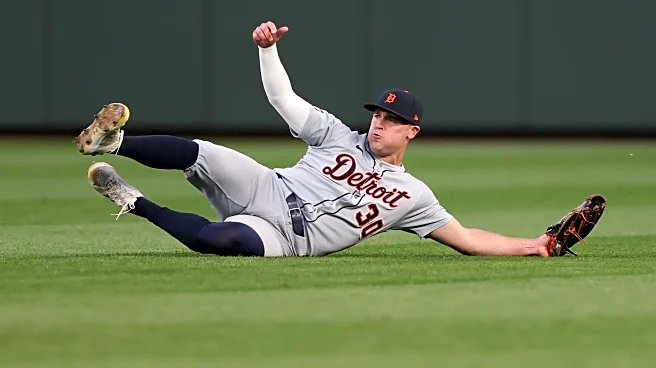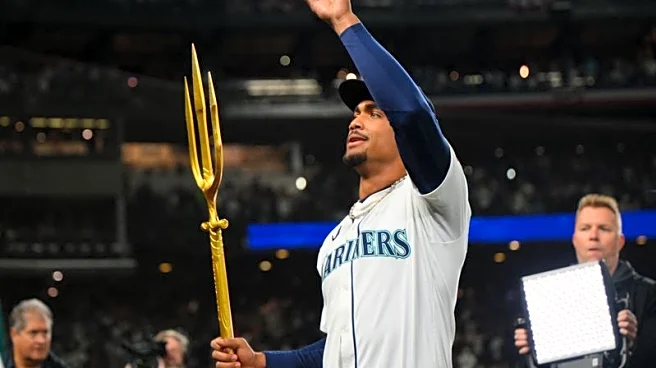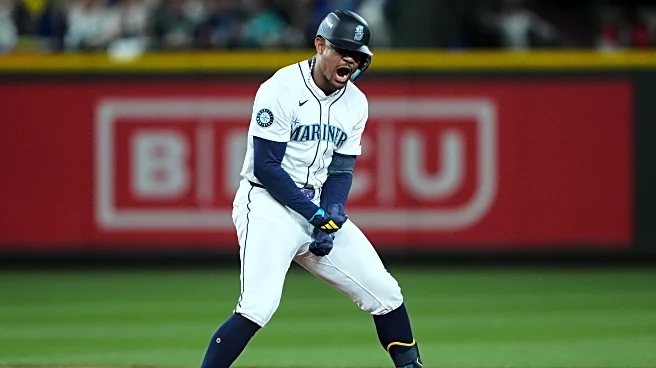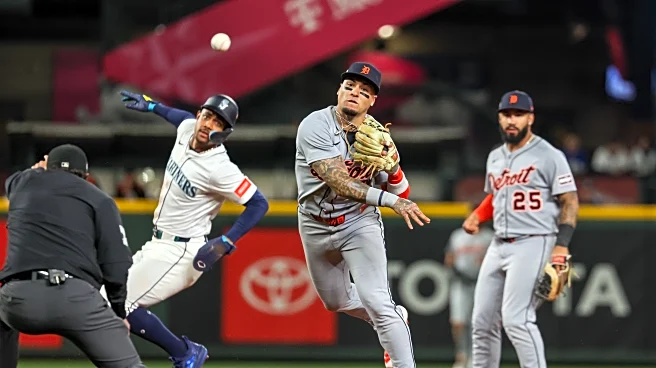Julio Rodríguez squinted under the bright overhead lights of the main interview room, used only for high-profile press conferences like contract extension announcements. “Man, it’s too early for this,” he joked, shading his green eyes against the glare.
The lights haven’t been too bright so far for Julio in the post-season. He was one of two Mariners to record a hit in Saturday’s series opener, and he recorded three of them, including a home run that gave the Mariners the lead for a brief, shining
half-inning. But his lone hit in Sunday’s game loomed even larger, an RBI double that drove in Cal Raleigh and gave the Mariners the one run of separation they needed.
Julio’s OPS when he swings at the first pitch is .879; accordingly, he swings at the first pitch 45.5% of the time, significantly higher than MLB’s average of around 30%. Pitchers have largely attacked him up and in on the first pitch, trying to get him to ground into a weak-contact out. In the previous at-bat, Tigers reliever Kyle Finnegan had thrown Cal Raleigh a first-pitch splitter on the plate that Cal tattooed into right field at 111 mph for a double. Finnegan threw Julio a first-pitch splitter, too, but up and in, and Julio took it. Finnegan tried the splitter again, dropping it in the exact same location as the pitch to Cal, and Julio laced it into left field for the go-ahead, game-winning RBI. The ball came off the bat at 86 mph, about six miles per hour slower than his 86th-percentile-ranked average exit velocity. It was a stark difference from his center-right tank-shot homer the night before that came off the bat at 109.5 mph, but to Julio, no different a hit.
“When it comes to hitting, I feel like I’m a very diverse hitter,” he said during his pregame press conference on Saturday. “A lot of people think that because I can hit the ball out of the park, they think I should be doing that all the time, but I’m somebody who can take my hits to the opposite field, I can move a runner, I can hit pretty much any way. I just feel like I’ve been really comfortable, and like I’ve been using all my clubs whenever I’ve been playing baseball.”
Part of that comfort for Julio might derive from his connection with the new hitting coaches in Seattle, Kevin Seitzer and Bobby Magallenes, formerly with the Braves. Both coaches aim to keep their messaging simple, and Seitzer has emphasized the importance of hitting the ball hard and an up-the-middle approach rather than mechanical changes and swing design.
“I do think that he is connected with Bobby and Seitz in a way that he hasn’t really connected with our hitting coaches in the past,” said Mariners GM Jerry Dipoto, speaking to the media on the final day of the season. “And all of that amounts to him unleashing what I think is top of class talent. There aren’t very many players in baseball that check more boxes.”
Rodríguez’s swing is a topic of intense study, even when things are going well. Articles and videos alike over the past several years have picked it apart, attempting to diagnose how he generates such incredible power as well as searching for the culprit when he hit rough skids. The discourse got to the point last season where Julio refused to answer questions about his swing. But to the Mariners GM, who has been watching Julio essentially since he took the job, it doesn’t look all that different from the player he signed back in 2017.
“If you look at Julio’s swing today, it looks like Julio’s swing a month ago, and a year ago, and it looks not terribly different from Julio’s swing when he was in Arkansas, because that’s what great players do. It’s not this wild transformation. It happens up here,” said Dipoto, tapping his temple.
For comparison’s sake: Julio’s double last night:
And one he hit just a little bit harder back in Arkansas.
While his month-by-month performances may fluctuate, the end result for Julio has been relatively stable. Julio hits more homers now that he’s a big-leaguer (and not confined to Dickey-Stephens Park, where right-handed power goes to die)—as a minor-leaguer, about a quarter of his hits were doubles and triples, and under 15% were home runs—but even with the power surge, his hit distribution has remained balanced as he’s been a big-leaguer, with a near-even percentage of extra base hits vs. homers. He also walked at exactly the same clip in 2025 as he did in 2024 (6.2%), which is about how often he walked in his previous two years. He’s run a respectable strikeout rate over his time in the bigs, although he actually cut it down in 2025 to 21.4%, his lowest mark yet and more in line with his minor-league numbers.
The outlier year for all these consistent numbers is 2024, a year where Julio was still worth almost four wins despite fighting through injury and disappointment: it’s the only year he posted a negative value for his swings in the “Heart Zone” of the plate, the part where he does the most damage, at -8. But even in that tough year, Julio was still able to post outstanding defensive numbers, giving him a safety net—something Dipoto suggested helped take focus off his struggles at the plate.
Another thing that potentially helped take the focus off Julio: Cal Raleigh’s historic season. For his part, Raleigh sees Julio’s bounceback 2025 as a sign of the young centerfielder’s growing maturity. “He’s understanding pitchers and himself as well, what he needs to do to get ready for a game every day and bring the best version of himself every single day. And that’s tough, you know, when you’re young. It takes time to learn. Doing what you want versus what you need. And he’s done a really good job of knowing the difference between the two and understanding sometimes doing the things you need to do is what will get the most out of you on the field.”
Jerry Dipoto also saw a turning point for Julio this season, when he declined a spot at the All-Star Game to focus on getting his own game right.
“When he did that, I thought it was a big moment for him,” said Dipoto. “He’s 24 years old and regarded as a superstar outside of the Seattle market. To step back the way he did—initially, it was to go spend time in the cages, spend time with the hitting coaches, work on getting the timing right in his swing—but in reality, all it really took was the mental release to say, ‘I’m not right, and I need to get right.’”
“It’s not easy. Sometimes it’s not linear. You’re gonna bump your head. You fall off the cart, and then you get back on. The same is true when you come up as a 21-year-old and you’re trying to figure out how to corral this type of talent.”
Julio, who relentlessly studies the greats from other sports—LeBron James, Tom Brady, Michael Jordan, Lionel Messi—has high expectations for himself. Ira Glass (of NPR fame) has said that people get into doing creative work because they have good taste, but for the first couple years, there’s a gap where your taste lags behind your talent, and that’s the part you have to fight through. Julio’s talent for baseball outstrips that of 99.9% of the population, but his taste is a bar set so high that these fall-off-the-cart moments are inevitable just because of the size of the mountain he’s chosen to climb. It doesn’t help that he’s been clear about the sky-high expectations for himself, to the point where they’re shared by the fanbase.
“When talking about the expectations, especially here in Seattle, they’re very hot,” said Dipoto. “And somehow Julio was often criticized in the midst of what’s nearly a six-win season. Go measure his season against all time greats and what they’ve done through the age of 24 and it stacks up pretty favorably.”
Challenge accepted. Here are the highest combined fWar totals for active players in their ages 21-through-24 seasons. Note this includes Bobby Witt Jr., who didn’t have an age-21 season and yet still makes the list, and also omits the contributions players like Bryce Harper, whose first pro season was at age-19, made prior to his age-21 season (Harper gets an additional 8.5 fWAR for those two seasons; Juan Soto, who also played his first full year at 19, gets an additional 9.1; Mike Trout gets an additional 10(!) fWAR for his age-20 season alone).
What stands out about this list, other than the starpower, is how each player got to their totals. Some have big swings year to year (often injury-inflected, as happened to Harper in his age-21 season with a torn UCL in his thumb); others, like Lindor, are slow builders, getting better every year. What stands out with Julio is, again, his consistency: how he entered as the 2022 Rookie of the Year is how he’s played, even with that slight dip in a fraught 2024 when he dealt with his own injury issues. For all the hand-wringing about second-half Julio—and he is markedly better in the second half of the season, a career OPS of .737 vs. .902—it all seems to work out in the end.
“Second half Julio has always been pretty awesome,” said Dipoto. “But I think that what we watched from July to the end of the year was the last step of him evolving into one of the most complete players in the game. He does everything, and he’s done everything since the day he lined up on a major league field. He’s just now doing it consistently, the way great players do.”
One person who doesn’t see any change in Julio is his teammate and friend, Randy Arozarena.
“I don’t think anything’s changed with Julio,” said Arozarena. “He’s the same kind human being, the same hard worker. Since I got here, I have noticed the kind of player he is, the kind of leader he can be in the clubhouse, and I think that’s good for him, because I know he’s just going to continue to get better and be able to share that wisdom with some of the young kids coming up.”
There’s always been a spotlight on Julio; he’s welcomed it, encouraged it, sometimes to his own detriment. The lights are even brighter in the postseason. But they’re nothing compared to wattage of the light inside him.
“It’s a pretty heavy load to carry when you know you’re capable, when you start examining what he’s done versus the all-timers,” said Dipoto. “It’s pretty fascinating. And the fact that we get to watch it every day, we’re a little spoiled. There is an element of greatness to what he’s done these first four years that we probably don’t appreciate enough.”
